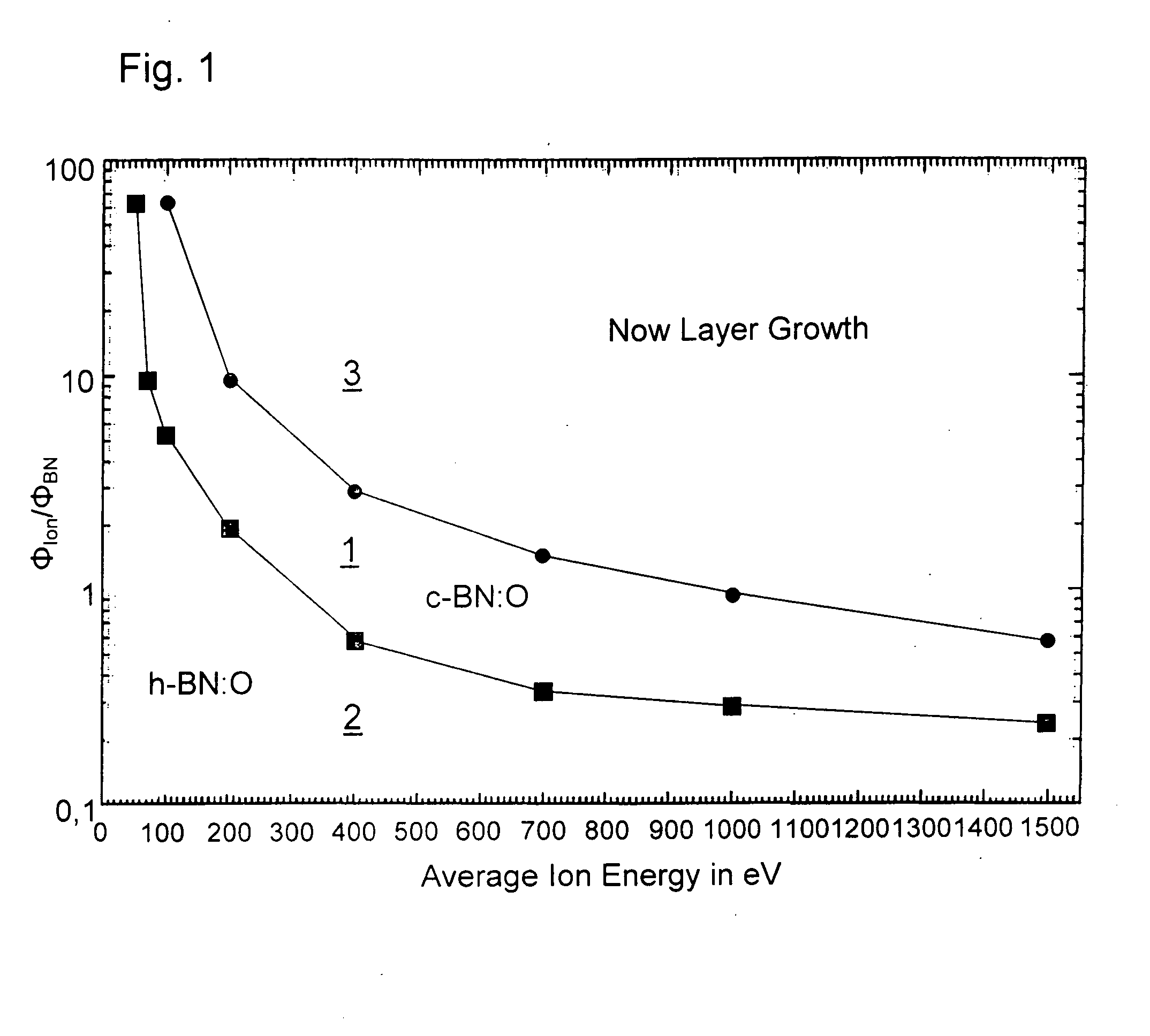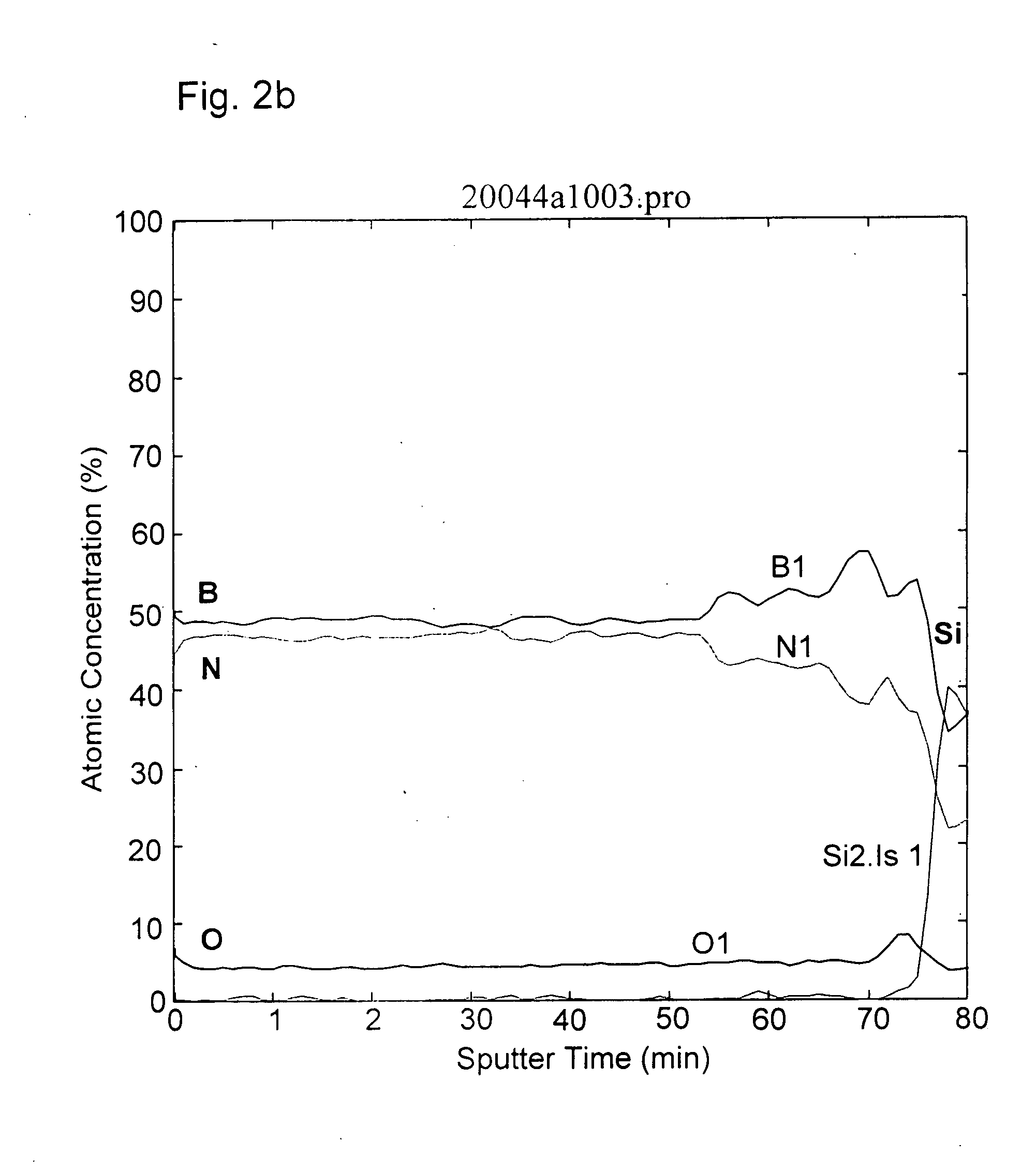Layered composite including cubic boron nitride
a boron nitride and composite technology, applied in the field of layered composites, can solve the problems of high internal stress, layer development, and inability to find practical use, and achieve the effects of layer build-up, thickness distribution, and layer accumulation
- Summary
- Abstract
- Description
- Claims
- Application Information
AI Technical Summary
Benefits of technology
Problems solved by technology
Method used
Image
Examples
Embodiment Construction
[0043]With a CVD / PVD hybrid deposition apparatus oxygen containing cubic boron nitride layers were manufactured successfully, on planar-silicon substrates with layer thickness of 500 nm, 1.8 μm, and 2.5 μm. As coating sources magnetron atomization units, an ECR ion cannon and an ECR plasma source were avail-able. A rotatable substrate carrier was used to which a DC or a high frequency substrate base voltage was applied and which was heated to 850°.
[0044]All layers were produced on a silicon substrate as a three-layer system consisting of a boron-rich ion energy graded adhesion layer (hexagonal boron nitride-oxygen-layer, h-BN:O-layer), a composition graded boron nitride-oxygen nucleation layer and a cubic boron nitride oxygen cover layer (C-BN:O-cover layer) in the order as mentioned.
[0045]The present case consequently concerns a layer system with three individual layer types in three individual layers. It is possible to provide, in the context of a multilayer system, at least two o...
PUM
| Property | Measurement | Unit |
|---|---|---|
| thickness | aaaaa | aaaaa |
| thickness | aaaaa | aaaaa |
| thickness | aaaaa | aaaaa |
Abstract
Description
Claims
Application Information
 Login to View More
Login to View More - R&D
- Intellectual Property
- Life Sciences
- Materials
- Tech Scout
- Unparalleled Data Quality
- Higher Quality Content
- 60% Fewer Hallucinations
Browse by: Latest US Patents, China's latest patents, Technical Efficacy Thesaurus, Application Domain, Technology Topic, Popular Technical Reports.
© 2025 PatSnap. All rights reserved.Legal|Privacy policy|Modern Slavery Act Transparency Statement|Sitemap|About US| Contact US: help@patsnap.com



